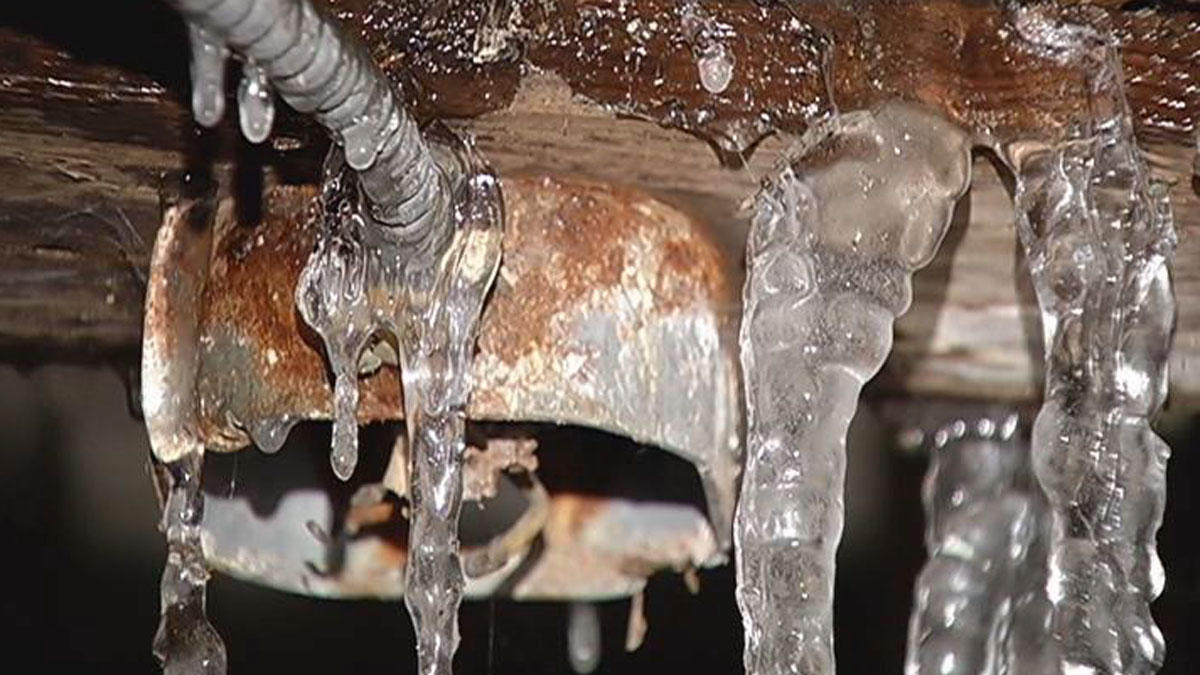Ways to Avoid Frozen Plumbing in Winter: Professional Guidance
Ways to Avoid Frozen Plumbing in Winter: Professional Guidance
Blog Article
In this article in the next paragraphs you will find additional professional content with regards to How to prepare your home plumbing for winter weather.
:strip_icc()/snow-outdoor-faucet-pipes-4af65d1e5e904fb1aa7bf74071fe5d89.jpg)
Winter can ruin your pipes, particularly by freezing pipes. Here's how to stop it from happening and what to do if it does.
Introduction
As temperatures decline, the risk of frozen pipelines rises, potentially bring about expensive fixings and water damages. Understanding exactly how to stop frozen pipelines is crucial for property owners in chilly environments.
Prevention Tips
Shielding susceptible pipelines
Wrap pipes in insulation sleeves or utilize warmth tape to shield them from freezing temperatures. Focus on pipes in unheated or external areas of the home.
Home heating techniques
Keep indoor spaces adequately heated, particularly areas with plumbing. Open cabinet doors to permit cozy air to distribute around pipelines under sinks.
Exactly how to identify frozen pipes
Seek decreased water circulation from taps, unusual smells or noises from pipes, and noticeable frost on exposed pipelines.
Long-Term Solutions
Structural modifications
Consider rerouting pipes away from exterior wall surfaces or unheated locations. Include added insulation to attics, cellars, and crawl spaces.
Upgrading insulation
Purchase high-quality insulation for pipelines, attics, and walls. Correct insulation assists maintain constant temperature levels and decreases the danger of icy pipelines.
Securing Exterior Plumbing
Garden tubes and outside faucets
Disconnect and drain pipes yard pipes prior to winter season. Set up frost-proof spigots or cover exterior faucets with insulated caps.
Recognizing Frozen Pipelines
What triggers pipelines to freeze?
Pipelines freeze when revealed to temperatures below 32 ° F (0 ° C) for prolonged durations. As water inside the pipelines ices up, it increases, taxing the pipeline walls and possibly causing them to rupture.
Risks and damages
Icy pipes can cause supply of water disruptions, property damages, and pricey fixings. Burst pipelines can flood homes and trigger considerable structural damage.
Indications of Frozen Water Lines
Recognizing icy pipelines early can stop them from breaking.
What to Do If Your Pipes Freeze
Immediate actions to take
If you believe icy pipes, maintain taps open up to soothe stress as the ice melts. Make use of a hairdryer or towels soaked in warm water to thaw pipes gradually.
Final thought
Preventing frozen pipelines requires aggressive steps and fast responses. By comprehending the reasons, signs, and preventive measures, home owners can safeguard their pipes throughout winter.
5 Ways to Prevent Frozen Pipes
Drain Outdoor Faucets and Disconnect Hoses
First, close the shut-off valve that controls the flow of water in the pipe to your outdoor faucet. Then, head outside to disconnect and drain your hose and open the outdoor faucet to allow the water to completely drain out of the line. Turn off the faucet when done. Finally, head back to the shut-off valve and drain the remaining water inside the pipe into a bucket or container. Additionally, if you have a home irrigation system, you should consider hiring an expert to clear the system of water each year.
Insulate Pipes
One of the best and most cost-effective methods for preventing frozen water pipes is to wrap your pipes with insulation. This is especially important for areas in your home that aren’t exposed to heat, such as an attic. We suggest using foam sleeves, which can typically be found at your local hardware store.
Keep Heat Running at 65
Your pipes are located inside your walls, and the temperature there is much colder than the rest of the house. To prevent your pipes from freezing, The Insurance Information Institute suggests that you keep your home heated to at least 65 degrees, even when traveling. You may want to invest in smart devices that can keep an eye on the temperature in your home while you’re away.
Leave Water Dripping
Moving water — even a small trickle — can prevent ice from forming inside your pipes. When freezing temps are imminent, start a drip of water from all faucets that serve exposed pipes. Leaving a few faucets running will also help relieve pressure inside the pipes and help prevent a rupture if the water inside freezes.
Open Cupboard Doors
Warm your kitchen and bathroom pipes by opening cupboards and vanities. You should also leave your interior doors ajar to help warm air circulate evenly throughout your home.

I stumbled upon that piece of writing about Winter Plumbing Precautions: Preventing Frozen Pipes while doing research the web. I beg you pause to promote this write-up if you enjoyed reading it. I thank you for reading our article about Preventing and dealing with frozen pipes.
Call Today Report this page